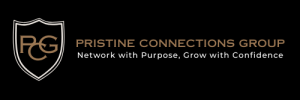At Pristine Connections Group, we understand the complexities and challenges involved in overseeing a building project, especially one as detailed as a Pristine luxury makeover. Managing construction delays is crucial, whether the project is residential or commercial, as several common issues can hinder its success. To help you navigate these challenges, our construction projects guide highlights the top five mistakes to avoid for effective project management.
Inadequate Planning and Scheduling

Skipping the Research Phase
Thorough research is foundational before breaking ground on any project. Failing to properly research can lead to unrealistic project scopes and outcomes. Every detail, from material selection to compliance with local regulations, needs to be carefully analyzed to ensure project success.
Underestimating Timeframes
Time management is crucial in construction project management. It’s common to underestimate the time required to complete specific phases of a project, which can lead to rushed work and compromised quality. Proper scheduling must account for all phases, including allowances for unforeseen delays.
Poor Resource Allocation
Resources, whether human, material, or financial, need to be allocated efficiently. Mismanagement of resources can lead to project delays, increased costs, and suboptimal outcomes. Effective resource allocation ensures that the project progresses smoothly and within budget.
Neglecting Risk Management
Failing to Identify Potential Risks
Every construction project faces potential risks, from labor shortages to equipment malfunctions. Not identifying these risks early in the project planning phase can lead to significant challenges down the road. A comprehensive risk assessment should be part of the initial project planning.
Inadequate Contingency Plans
Once risks are identified, adequate contingency plans must be developed. Many projects fail due to the lack of backup plans for critical risks. Effective contingency planning can help manage and mitigate risks without derailing the project.
Ignoring Legal and Safety Regulations
Compliance with legal and safety regulations is not just mandatory but essential for the safety and integrity of the construction project. Ignoring these can lead to costly fines and, more critically, hazardous conditions on site.
Communication Failures
Inconsistent Communication Among Stakeholders
The importance of maintaining open lines of communication with all stakeholders, including clients, contractors, and team members, cannot be overstressed. Poor communication can lead to misunderstandings, errors, and dissatisfaction.
Lack of Regular Updates
Regular updates keep everyone involved informed of the project’s progress and any issues that may arise. Failing to provide updates can create gaps in project management and lead to decisions that are not aligned with the project goals.
Not Using Project Management Tools
Modern project management tools are essential for effective communication. These tools facilitate better collaboration and information sharing among team members, which is crucial for the success of complex projects like Pristine luxury remodeling.
Overlooking Quality Control
Skipping Regular Inspections
Regular inspections ensure that the project meets the established standards and specifications. Skipping these inspections can lead to poor construction quality and might require expensive corrections later.
Compromising on Materials
Opting for cheaper materials might reduce costs in the short term but can degrade the overall quality and durability of the construction. Always choose the right quality materials, especially in Pristine luxury remodeling, to ensure that the finish and structure are up to the mark.
Ignoring Feedback
Feedback from the construction team and the client is invaluable. Ignoring this feedback can prevent you from addressing potential issues early and may impact the project’s final outcome negatively.
Improper Project Closure
Incomplete Documentation
Every aspect of the project, from initial contracts to final blueprints and compliance certificates, needs to be documented thoroughly. Incomplete documentation can lead to legal complications and issues with project handover.
Failing to Conduct a Final Review
A final review before officially closing the project can catch any lingering issues that might have been overlooked. This step is crucial to ensure that everything is completed as per the client’s specifications.
Not Gathering Lessons Learned
Every project provides valuable lessons that can improve future project management practices. Failing to review and learn from each project’s successes and mistakes is a lost opportunity for growth and improvement.
Final Wording
Effective management of construction projects, particularly in Pristine luxury remodeling, requires meticulous attention to detail and proactive planning. By avoiding these common mistakes outlined in our construction projects guide, project managers can ensure smoother execution, better quality, and timely completion of their construction projects. At Pristine Connections Group, we strive to empower our clients and their project managers with the knowledge and tools needed to achieve excellence in every construction endeavor.
FAQ’s
Adequate planning ensures all aspects of the project, including scope, budget, and timelines, are realistic and achievable. It helps in identifying potential challenges early and setting a clear roadmap, reducing the risk of costly overruns and delays.
Effective risk management involves identifying potential risks early, assessing their impact, and preparing contingency plans. Regularly revisiting and updating the risk management plan throughout the project lifecycle is crucial to address new and evolving risks.
Communication is vital in ensuring all project stakeholders, from team members to subcontractors and clients, are aligned with the project goals, changes, and progress. It helps prevent misunderstandings and ensures collaborative problem-solving.
Inspections should be conducted at critical milestones and after completion of major phases to ensure that the work complies with project specifications, building codes, and safety standards. The frequency may vary based on the project size and complexity.
Effective tools include project management software like Microsoft Project, Trello, or Asana, which help in scheduling, resource allocation, and communication. Tools specific to construction, like AutoCAD and Revit, are also essential for design and technical planning.







